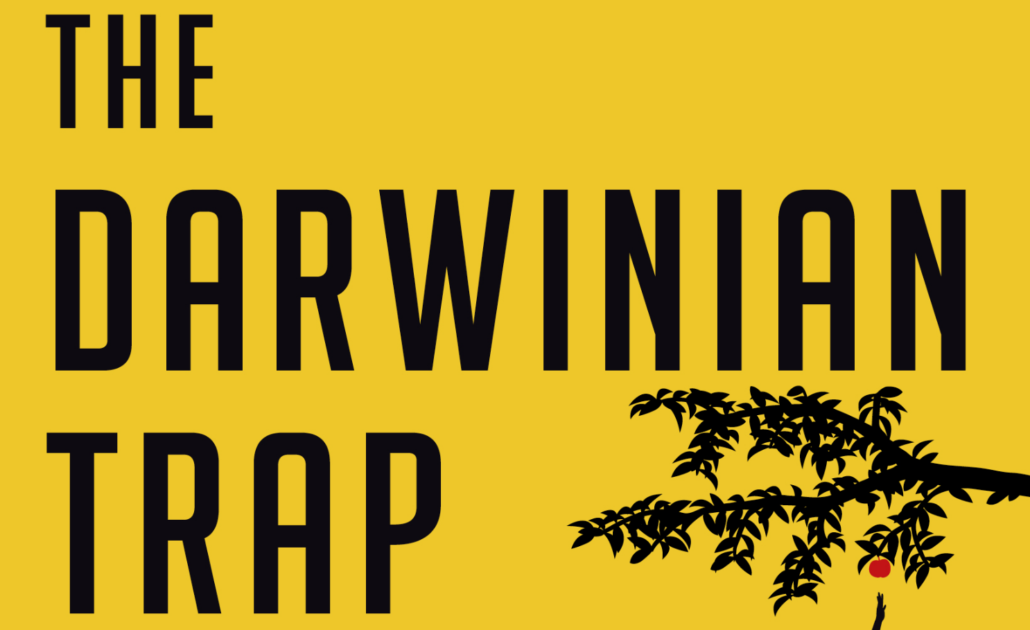The AI Arms Race & the Darwinian Trap – Kristian Rönn & Anders Sandberg
Discussion between Anders Sandberg & Kristian Rönn on the AI Arms Race & the Darwinian Trap.
Kristian Rönn is the CEO and co-founder of Normative, and author of the book ‘The Darwinian Trap’ (buy it here). He has a background in mathematics, philosophy, computer science and artificial intelligence.
Anders Sandberg is a researcher at the Mimir Center for Long Term Futures Research at the Institute for Futures Studies.
Discussion Summary
The core idea of The Darwinian Trap is that competitive evolutionary pressures can push intelligent agents—individuals, firms, governments, even AIs—into behaviour that’s locally rational yet globally harmful. Kristian Rönn sketches how these “traps” emerge from selection dynamics and incentive gradients (i.e. tragedy-of-the-commons patterns), and why simply being smarter doesn’t automatically free us from them.
Kristian and Anders connect the thesis to present-day technology races, especially AI. Anders Sandberg frames “AI as an arms race” as one vivid instance of a broader multipolar problem: if actors fear being left behind, they may erode safety margins and rush deployment. The pair unpack how capabilities competition can systematically outpace alignment and governance work, not because anyone intends harm, but because the payoff landscape rewards speed and visible progress. They discuss familiar examples—attention markets, finance, biotech—to show the pattern’s generality.
Sandberg and Rönn ask the pertinent question: What would actually help?
They distinguish between wishful exhortations (“be careful”) and mechanisms that reshape incentives: standards and audits that make safety legible; institutional designs that reward restraint; liability and assurance regimes; compute and dataset governance; and international coordination that reduces first-mover pressure. They emphasise measurable evaluation of models (not just PR claims), transparency that doesn’t recklessly leak capability, and norms that raise the “safety floor” without freezing innovation. Both note that solutions must be robust to adversarial incentives and uneven global adoption.
Philosophically, they explore whether intelligence lets us exit Darwinian traps or merely weaponises them. Anders argues that foresight, scenario analysis, and value-reflective institutions can open exit ramps—if we build them early enough. Kristian stresses that coordination is itself a capability we can cultivate: cultural evolution, better governance tooling, and clearer social contracts can shift the equilibrium away from destructive competition. They also touch on moral progress, the role of prudential “speed limits,” and avoiding false dichotomies between “pause” and “accelerate”.
The conversation closes on a pragmatic optimism: Darwinian pressures are real, but not destiny. If we can make good behaviour payoff-compatible—through standards, shared monitors, credible commitments, and clearer accountability—then even competitive actors can converge on safer trajectories. In AI specifically, that means normalising pre-deployment risk assessments, red-team exercises, post-deployment monitoring, and incident reporting—so that safety isn’t a tax on competitiveness but part of the competitive edge.
Video Chapters:
00:00 – Introduction and Guest Background
00:35 – What is “The Darwinian Trap”?
01:06 – Evolution as a Metaphor and a Reality
02:12 – The Iterated Prisoner’s Dilemma & Evolutionary Dynamics
05:02 – How Evolution Favors Short-term Optimization
08:29 – Evolution and Workplace Competitiveness
11:32 – Predators, Prey, and Evolutionary Arms Races
13:53 – The 2008 Financial Crisis as an Evolutionary Trap
15:44 – The AI Arms Race & Safety Concerns
17:45 – Economic Incentives Driving AI Risk
20:00 – AI Moratorium vs. Continued Development
22:01 – Is Cooperation Possible Among AI Companies?
25:01 – Open-Source AI: Risks and Benefits
27:45 – Should AI Be Open-Source? Ethical Considerations
30:10 – The Dangers of Self-Improving AI
32:56 – The Problem of Short-term Gains vs. Long-term Risks
35:50 – AI, Governments, and Regulation Challenges
38:30 – Multi-Polar Traps & Competition
42:10 – Solving Competitive Traps Through Better Governance
46:15 – The Future of AI and Global Cooperation
49:50 – Can We Prevent Existential AI Risks?
52:40 – Fragility of Life & Evolutionary Challenges
55:30 – What Evolution Can Teach Us About AI Alignment
59:20 – The Role of Institutions in Managing AI Risks
01:03:05 – The Great Bootstrap: Can We Rewire Incentives?
01:07:30 – Reputation Markets & Better AI Decision Making
01:12:10 – How Markets Can Help Regulate AI Safely
01:16:30 – The Future of AI: Can We Escape the Trap?
01:21:00 – Final Thoughts & Optimistic Outlook









